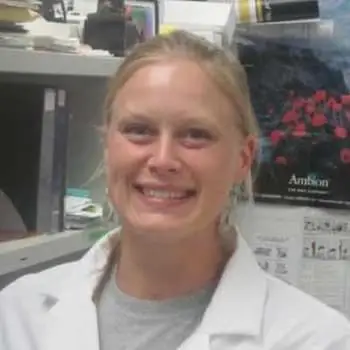Ativan is a benzodiazepine that is used to treat anxiety and panic disorders. Misuse of Ativan is associated with a high risk of developing dependency or addiction.
Ativan is a brand name for the benzodiazepine lorazepam. Ativan is prescribed to treat anxiety and panic disorders, as well as some seizure disorders, withdrawal symptoms and chemotherapy-induced nausea and vomiting. Ativan is a popular illicit drug and is used recreationally for its sedative effects. However, routine Ativan use induces tolerance and people risk developing dependency or addiction.
What is Ativan?
When used as prescribed, Ativan is an anti-anxiety medication that is also used to treat panic disorders, some types of seizures, and insomnia. Ativan is similar to other benzodiazepines that are often misused, including Xanax, Valium, and Ambien. Pharmacologically, Ativan (and other benzodiazepines) work by enhancing the effect of the inhibitory neurotransmitter GABA, resulting in sedation and hypnotic effects. Ativan is also sometimes used as a date-rape drug.
Drug Classification
Ativan is classified as a benzodiazepine. Ativan is a Schedule IV drug, meaning that it has value as a prescription drug but that it has some potential for misuse. Thus, Ativan is a controlled substance that requires a prescription. Prolonged use may cause physical or psychological dependence.
Treatment Can Be Life Changing. Reach out today.

Ativan Ingredients
The active ingredient in Ativan is the benzodiazepine lorazepam.
Uses of Ativan
Illicit use of Ativan can be incredibly dangerous, but there are several medically approved Ativan uses:
- Sleep Problems: Like other benzodiazepines, the sedative effects of Ativan can be incredibly helpful for people who struggle with insomnia.
- Anxiety/Panic Attacks: Ativan is a commonly prescribed anti-anxiety medication and its rapid onset can interrupt panic attacks.
- Nausea: Ativan enhances the effects of the inhibitory neurotransmitter GABA, meaning that neurons which would generally potentiate nausea remain inactive.
- Seizures: As with nausea, increasing the effectiveness of GABA dampens excitatory signaling to muscles, reducing or eliminating seizures related to hyperexcitability in the brain.
Ativan is generally not used to treat:
- Depression: Ativan should not be used to treat major depression, but secondary depression associated with anxiety disorders may respond well to Ativan.
- Pain: Ativan is not a first-line treatment for pain management. However, it may relieve pain associated with muscle spasms or neuropathic pain. Ativan has very limited efficacy in most types of pain management.
- Migraines: Ativan is not used to treat migraines. The co-use of Ativan with the anti-migraine drug valproate can lead to liver problems.
See Related: Ativan for alcohol withdrawal
Dosage and Administration
Ativan is frequently administered orally, intramuscularly or intravenously. Adult Ativan dosage typically ranges from 1 mg to 10 mg, with maintenance dosage to treat anxiety in adults usually falling between 1 mg and 2 mg, two to three times per day.
See Related: How much Ativan is lethal
Administration Methods
There are several different administration methods for Ativan, including:
- Ativan pills come in 0.5 mg, 1 mg and 2 mg doses. Ativan tablets are round and white.
- Liquid Ativan is generally formulated as 2 mg and is taken orally.
Injectable Ativan is also formulated as 2 mg. Ativan injection (intravenous or intramuscular) is used by medical professionals to interrupt status epilepticus. Injectable Ativan is not generally available by prescription.
What Does Ativan Look Like?
Prescription Ativan comes in pill or tablet form and is round and white. Ativan powder is essentially insoluble in water. Liquid Ativan is a viscous, glycol-based fluid.
Brand Names
Ativan is the brand name for the benzodiazepine lorazepam. Lorazepam may also be sold under the brand name Lorazepam Intensol.
Similar drugs that are in the benzodiazepine family include Xanax (alprazolam), Valium (diazepam), Klonopin (clonazepam) and Dalmane (flurazepam). However, these drugs are pharmacologically distinct from Ativan (lorazepam).
Other Names for Ativan
Lorazepam is the generic name for Ativan. Street names for Ativan include benzos, downers, nerve pills and tranks.
Ativan Side Effects
Side effects of recreational Ativan use may resemble alcohol intoxication. Common behavioral effects of Ativan intoxication include drowsiness, dizziness and impaired movements. Ativan overdose can include hallucinations, memory loss, and loss of muscle control. Ativan overdose is a medical emergency and may be lethal.
How Long Does Ativan Stay in Your System?
The half-life of Ativan is approximately 12 hours, and the half-life of the Ativan metabolite lorazepam glucuronide is approximately 18 hours. Compared to other benzodiazepines, Ativan has a relatively short half-life.
Blood
Ativan is detectable in blood for up to three days after use.
Urine
Ativan is detectable in urine for up to nine days after use.
Hair
Ativan is detectable in hair follicles for at least four weeks after use.
Breast Milk
Ativan is detectable in breast milk for less than five days after use.
Is Ativan Addictive?
Ativan is highly addictive. Even short-term use of Ativan can induce tolerance, requiring increased dosages to achieve the same effect. When a person stops taking Ativan, withdrawal effects are common. Ativan is addictive in small doses. Ativan should not be taken for more than a few months at a time, owing to the high risk for developing dependence and addiction.











